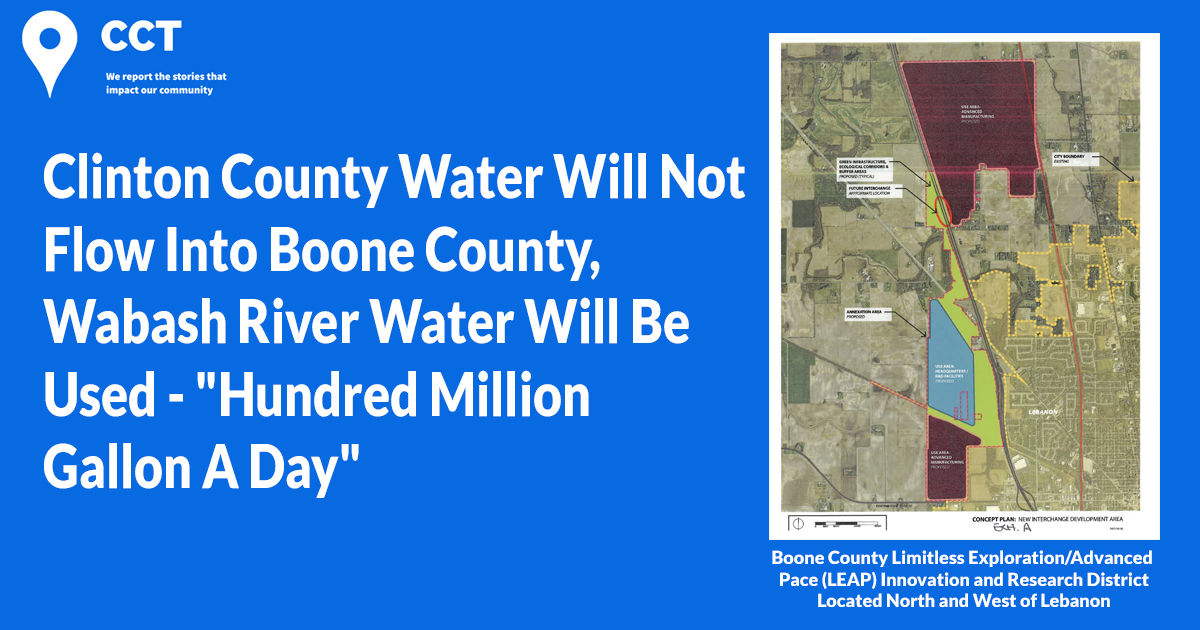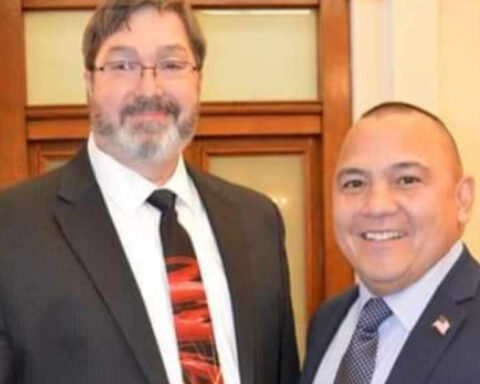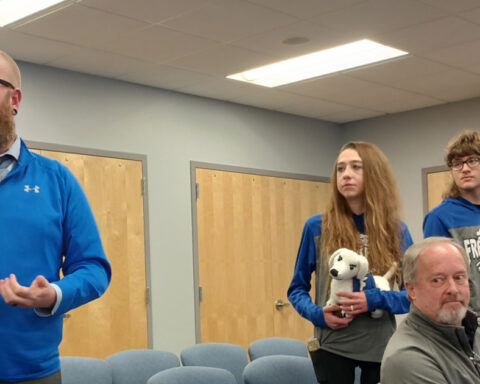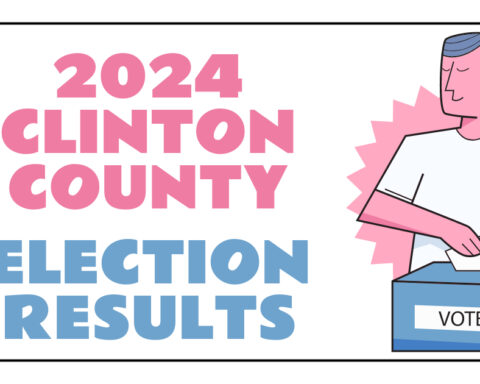FRANKFORT, Ind. – Officials from the State of Indiana have notified the Frankfort Utility Services that Clinton County water will not be directed to Boone County as part of the Lebanon area Limitless Exploration/Advanced Pace (LEAP) Innovation and Research District.
As previously reported, the State of Indiana was looking to source water for the designated 6,000 acre development.
Kent Brewer, chairman of the Frankfort Utility Service Board (USB) provided an update on the aquifer study at the conclusion of the USB meeting on Monday, September 19. The USB and Clinton County Commissioners are participants in a State Water Infrastructure Fund (SWIF) grant and the state is test drilling in a southwest portion of the county.
Brewer said, “about two weeks ago, we were notified that they’re not gonna be taken water from Clinton County.”
The State of Indiana provided the information during a brief, 10-minute zoom meeting with Brewer, Todd Corrie – general manager of Frankfort Utilities, and Alicia Albertson – attorney for the USB.
The State has one remaining test well and will share the data once the study is completed.
“The state notified Todd and Alicia, and I in a zoom meeting… they’re gonna give us that data, but they are going to get 10 million gallon a day from south of Lebanon, bring it up from the south and they’re going to tap the Wabash River and they’re gonna bring a hundred million gallon a day up through Tippecanoe County. They’re gonna hit US 52 and take it straight to Lebanon right down US 52.”
Brewer said the State did not provide any indication as to why the decision was made not to use water from Clinton County; however, he did provide some ideas as to why the State might have gone with different alternatives.
“No, they didn’t give a whole lot of indication. I believe they’d done like seven to eight wells out that way and I don’t believe they hit the depths that they wanted to hit – where they felt there would be the quantity of the water. The one they’re doing, I do know was like 335-feet [deep] and they hit a second aquifer there, but some of the other ones they didn’t hit the water that they really want.”
“So at that point, I think they decided, why invest in that right there and not get eight, 10 million gallon a day was what they originally had told us they were gonna get out of there.”
“Obviously we had no say. The Utilities, the County, none of us had a say. They just showed up, started land rental agreements, drilling.”





